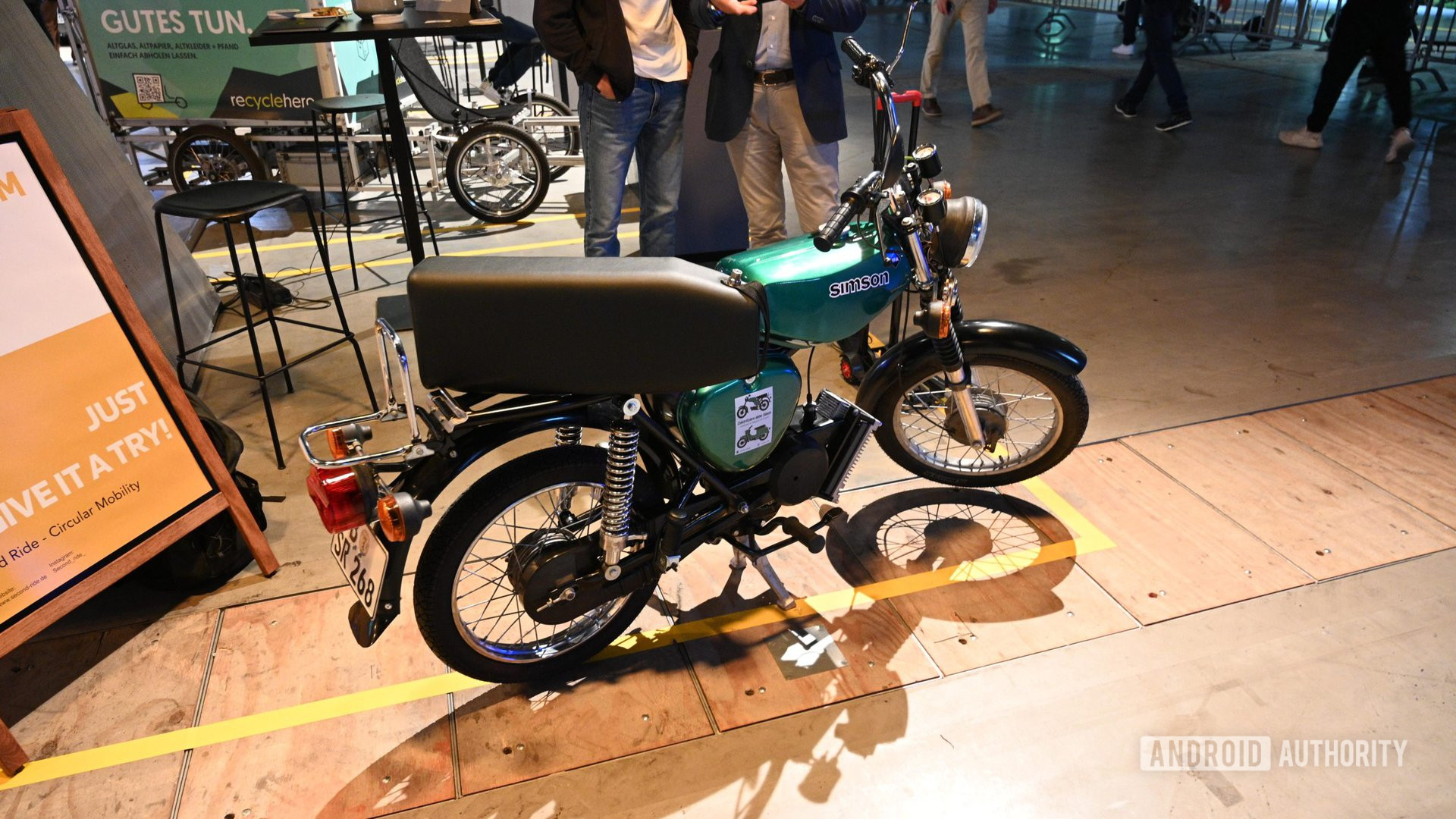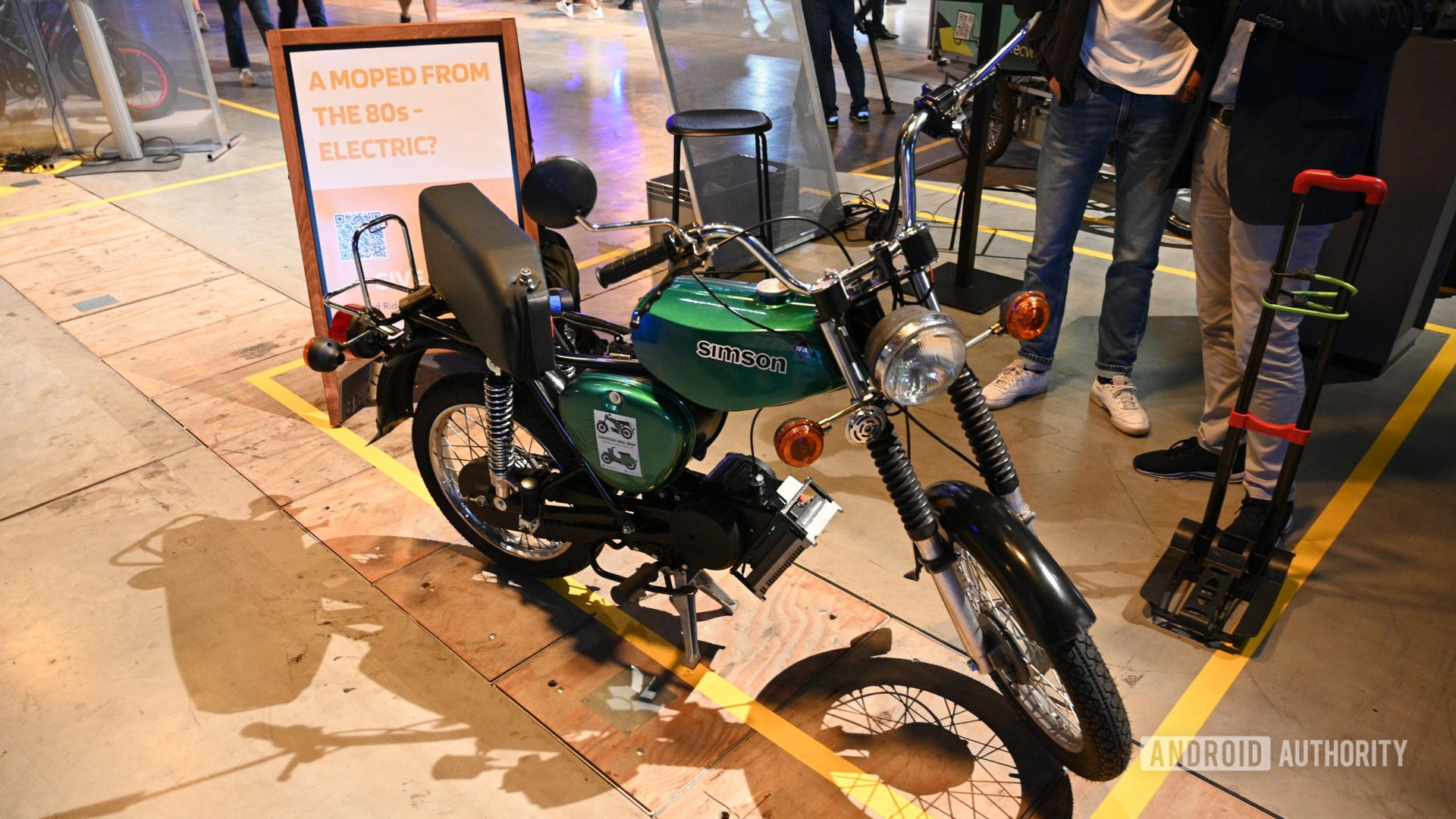Affiliate links on Android Authority may earn us a commission. Learn more.
This company electrifying ‘80s-era motorcycles is my personal IFA highlight

Reduce, reuse, recycle. It’s a simple slogan that summarizes what we should all do to reduce our impact on the planet. But let’s be honest, most of us only think about the third tenet and forget about the others. And while recycling is important, it’s just as essential to reduce our consumption and reuse whatever we can.
My personal highlight of IFA 2022 is a small German company called Second Ride, which aims to encourage the reuse of existing vehicles. Namely, decades-old mopeds and motorcycles that would otherwise be scrapped.
Also read: Green Authority – The best electric scooters
Don’t get me wrong. I appreciate the innovation and tech advancements that go into the e-scooters and e-bikes I saw at IFA. Products like the fully foldable Riley RS3 scooter are genuinely intriguing. But many micro-mobility vehicles seem designed to hit a low price point while checking some features off a list. Durability, long-term support, and environmental impact rarely seem a concern. Against this backdrop, Second Ride stood out to me because it focuses on making the most out of existing products instead of hawking something brand new.
Second Ride manufactures retrofitting kits for mopeds and motorcycles manufactured by Simson, an East German company that shut down in the early 2000s. That includes the Schwalbe, a small moped made from the ‘60s to the ‘80s that has gained a cult following among German motor enthusiasts. There’s also a kit for the Simson S51 (pictured below), a more practical and larger moped made throughout the ‘80s.

According to Second Ride, over six million of these vehicles are still in circulation in Germany. The company’s electrification kits let owners swap the old petrol engine for an electric motor. The battery is embedded in the replacement seat. The kit includes a new throttle grip with a display attached and all the other bits and pieces required to go from a clunky fume-spewing ICE to a smooth and silent electric. The conversion process shouldn’t take more than a couple of hours, according to the company.
With the new electric motor, Simson mopeds can reach speeds of up to 60km/h and an autonomy of up to 50km. That’s not bad for decades-old tech brought back to life.
Decades old tech brought back to life
Second Ride’s conversion kits are not cheap, at €2,690 for the first customers. That’s set to go up to €2,990 from next year, which is probably enough to buy a brand new e-moped. Even so, a company representative told me its production is already booked a year in advance, so there’s obviously interest in the idea.
Second Ride is a startup and there’s no guarantee it will establish itself in the long term. The scalability of its business model is limited by the number of functional old bikes left on the road — and of owners who can afford to pay €3,000 to go electric. Regardless, it’s good to see a company tackle a segment that’s mostly neglected. While others produce generic conversion kits for bikes and even motorcycles, it’s pretty rare to see companies focus on classic vehicles such as the Simsons.
Also read: Best of IFA 2022 Awards: All the very best products
IFA encapsulates what the modern consumer electronics industry is all about. Everything is flashy and demanding of our attention. Everything is better, faster, and often cheaper than the stuff we saw the year before. It’s a race to replace, and it’s easy to forget just how disposable our things have become, from smartwatches to automobiles. There are precious few companies like Second Ride that focus on extending the life of products in which we’ve already invested our finite resources. And that’s something we need to do more of.